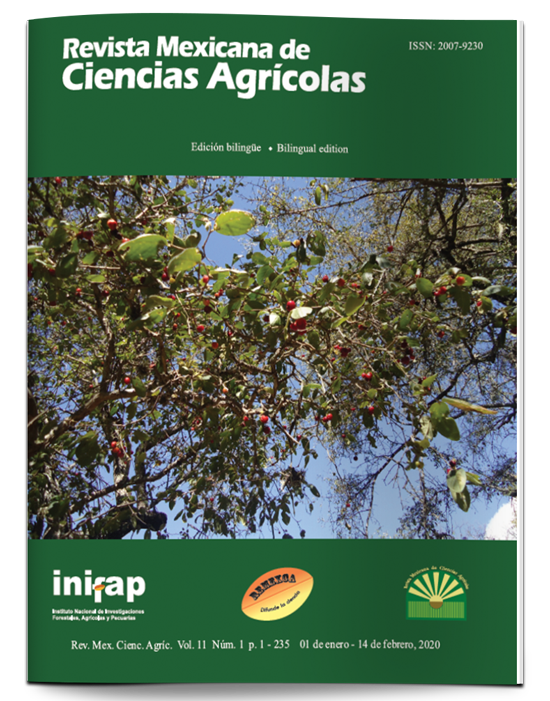Competitiveness of sorghum production in northern Tamaulipas, Mexico
DOI:
https://doi.org/10.29312/remexca.v11i1.1914Keywords:
competitiveness indicators, grain sorghum, private profitability, production costsAbstract
This research was carried out in northern Tamaulipas in the autumn-winter 2016-2017 cycle, based on information from 40 grain sorghum producers, where prices of the product, inputs and their technical production coefficients were obtained. With this information, private production costs were calculated. The objective of this work was to determine the competitiveness of the cultivation of sorghum grain by humidity-technology regime and producer size in northern Tamaulipas, by using the methodology of the policy analysis matrix in its private part. The results showed that the three technologies had a positive gain, a private profitability ratio, which was between 20.66% to 26.43% and a private cost ratio that stood between 0.4359 and 0.4642, indicating competitiveness, allowing the payment of internal factors, leaving a positive profit margin, provided that the payment for land rent is not considered. Intermediate consumption was between 62.78% and 71.53% of the value of production, which represents the purchase of inputs and services from other sectors of the economy. The added value varied from 28.47% to 37.22%, representing the minimum contribution in the generation of employment in this crop. In general, the results indicate that on average the three technologies used in production in northern Tamaulipas, without considering the income of the land were profitable and competitive, which allows to expect a future expansion of the production of this grain in the region study.
Downloads
Published
How to Cite
Issue
Section
License
The authors who publish in Revista Mexicana de Ciencias Agrícolas accept the following conditions:
In accordance with copyright laws, Revista Mexicana de Ciencias Agrícolas recognizes and respects the authors’ moral right and ownership of property rights which will be transferred to the journal for dissemination in open access. Invariably, all the authors have to sign a letter of transfer of property rights and of originality of the article to Instituto Nacional de Investigaciones Forestales, Agrícolas y Pecuarias (INIFAP) [National Institute of Forestry, Agricultural and Livestock Research]. The author(s) must pay a fee for the reception of articles before proceeding to editorial review.
All the texts published by Revista Mexicana de Ciencias Agrícolas —with no exception— are distributed under a Creative Commons License Attribution-NonCommercial 4.0 International (CC BY-NC 4.0), which allows third parties to use the publication as long as the work’s authorship and its first publication in this journal are mentioned.
The author(s) can enter into independent and additional contractual agreements for the nonexclusive distribution of the version of the article published in Revista Mexicana de Ciencias Agrícolas (for example include it into an institutional repository or publish it in a book) as long as it is clearly and explicitly indicated that the work was published for the first time in Revista Mexicana de Ciencias Agrícolas.
For all the above, the authors shall send the Letter-transfer of Property Rights for the first publication duly filled in and signed by the author(s). This form must be sent as a PDF file to: revista_atm@yahoo.com.mx; cienciasagricola@inifap.gob.mx; remexca2017@gmail.
This work is licensed under a Creative Commons Attribution-Noncommercial 4.0 International license.



